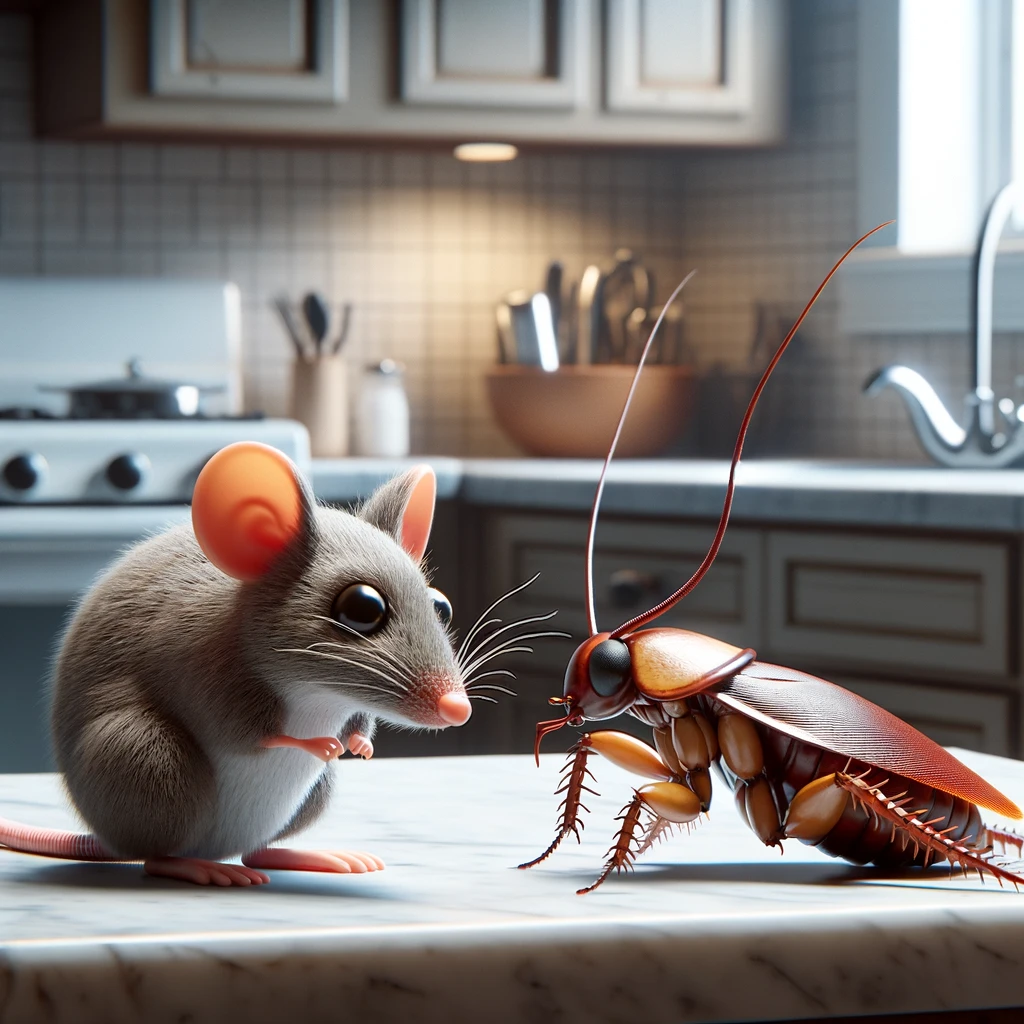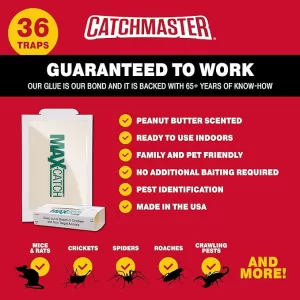Cockroach Poop vs. Mouse Poop
 Identifying Your Pest Problem
Identifying Your Pest Problem
Discovering uninvited guests through their droppings in your home can be unsettling. Knowing whether those small, dark specks are from cockroaches or mice is crucial for tackling the infestation effectively. This guide will help you distinguish between cockroach poop vs mouse poop, understand the associated health risks, and take the right steps toward a clean and pest-free home.
Identifying the Culprit
Cockroach Droppings
- Appearance: Cockroach feces vary in size depending on the species but generally resemble small, black pepper-like specks or coffee grounds. Larger roaches might leave cylindrical droppings with blunt ends and ridges along the sides.
- Location: Typically found in areas where roaches congregate or travel, such as kitchen cabinets, behind appliances, and along baseboards.
Mouse Droppings
- Appearance: Mouse poop is small (about 1/4 inch long), spindle-shaped, and pointed at both ends. Fresh droppings are dark and moist, turning gray and hard as they age.
- Location: Found along walls, near food sources, and in secluded areas like storage boxes and under sinks.
Health Risks (Cockroach Poop vs. Mouse Poop)
Both cockroach and mouse droppings can pose health risks by spreading bacteria and triggering allergies or asthma. Cockroach feces may contain pathogens that lead to diseases like salmonella and E. coli infections. Mouse droppings are also dangerous, capable of spreading hantavirus, among other diseases. Proper identification and cleanup are essential for maintaining a healthy living environment.
Cleanup and Sanitation
Safe Cleanup Practices
- Wear gloves and a mask to avoid direct contact with droppings.
- Vacuum or sweep up droppings carefully to prevent aerosolizing harmful particles.
- Disinfect the area thoroughly using a bleach solution or disinfectant spray.
Preventing Reinfestation
- Seal entry points to deter pests from entering your home.
- Store food in airtight containers and dispose of garbage regularly.
- Reduce moisture by fixing leaks and using dehumidifiers.
Pest Control Strategies
Cockroach Control
- Use baits, traps, and insecticides specifically designed for cockroaches.
- Regularly clean to remove food particles and water sources.
Mouse Control
- Set traps along walls where mice are likely to travel.
- Consider using bait stations and sealing food in rodent-proof containers.
Conclusion: Knowledge Is Power
Correctly identifying the type of droppings in your home is the first step toward addressing a pest infestation. Whether dealing with cockroaches or mice, understanding the specific risks and employing targeted cleanup and control strategies can help restore peace and health to your home. Don’t hesitate to consult a pest control professional for severe infestations to ensure comprehensive and safe management of these unwelcome guests.
- The Life Span of a Cockroach
- Do Cockroaches Eat Clothes?
- Do Cockroaches Have Teeth?
- Shrimps and Cockroaches
- Will Sleeping with the Light On Keep Cockroaches Away?
- How to get roaches out of your car overnight
- Do Cockroaches Feel Pain?
- How Many Legs Do Cockroaches Have?
- Comparing Cockroach Eggs Size for Different Types of Cockroaches
- Identifying a Cockroach Bite on the Lips or Face
- Black Water Bug Identification and Control
- Why Do Water Bugs Come Out At Night?
- What Does Roach Rash Look Like?
- Can Cockroaches Bite Your Eyelid?
- Can Cockroaches Live in Your Balls?
- How did cockroaches get their name?
- Why Do Cockroaches Shed Their Skin?
- What Smell do Palmetto Bugs Hate?
- Baby Palmetto Bug: Identification and Control
- Cockroach Eggs vs Poop: How to Tell the Difference
- How to Get Rid of Water Bugs
- How Long Can a Cockroach Live Without Air?
- The Lifecycle of the German Cockroach: From Egg to Adult
- Do Mice Eat Roaches
- Wood Roach vs. Cockroach

